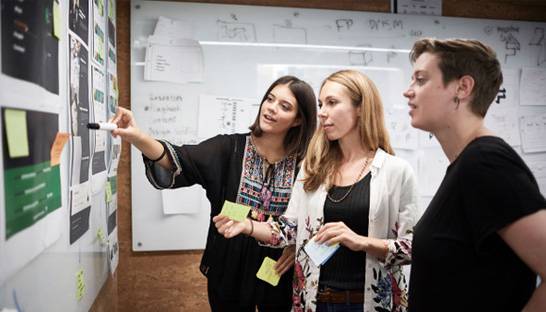- May 28, 2019
- Category: News

As customer expectations rise and the availability of alternatives increase, businesses are rushing to deliver products to market more quickly to close the customer experience gap. For many organisations, shifting from waterfall to an Agile delivery approach has been seen as the key to faster and better delivery. But how many of these businesses are truly Agile in their mindset and working practices? Consultancy.uk sat down with Tim Loo, a Director at experience design agency Foolproof, to discuss the current state of Agile and the challenges that come with it.
What’s your take on the ‘state of Agile’ in businesses at the moment?
We work with organisations across a wide range of sectors including financial services, energy, fast moving consumer goods, automotive and, over the last few years we’ve seen this almost religious fervour around shifting to Agile delivery. The management consulting and tech community have piled in making promises that Agile is good for whatever ails you. Too slow? Go Agile. Too expensive? Go Agile. Products suck? Go Agile. Not innovating? Go Agile.
For CIOs and technology departments desperate to rebuild their internal credibility in delivery, Agile has become a tactic for seizing back the initiative and a shorthand for “don’t worry and trust us techies – it will be different this time”. As with all hyped management ideas, the core idea makes a lot of sense. But much like its predecessors, Six Sigma and Matrix Management, among others, Agile is often stretched and deformed. What we’re seeing is “not my definition Agile” or “sort of Agile-ish” or even “w-agile”.
Agile is a predetermined mindset and way of thinking – as soon as we dismiss its principles on direction and intention, the process can fall apart. Businesses must begin to understand that Agile isn’t always the best approach. In my mind, the best approach is always the one that’s most appropriate. Here at Foolproof, we’ve done a lot of thinking around user-centered design and how it fits into DigitalOps, DevOps, DesignOps and/or ResearchOps, but this only gets us as far as operational agility.
Though Agile reduces the risk of delivering the wrong product badly, it doesn’t guarantee a customer-centric approach or better product. Being agile and producing amazing, valuable products for tomorrow’s customers is where strategic agility comes in.

Could you elaborate on operational agility versus strategic agility?
This is an idea I first saw in the writings of Stephen Denning, author of The Age of Agile. Many of the conversations around Agile delivery focus on what Denning describes as operational agility – when we decide to tackle a problem or test and build on a hypothesis, how good are we at mobilising and creating the conditions for success for a high-performing cross-functional team to deliver? For teams building and improving our products today, this needs to be a core requirement. However, as a strategist, the idea I’m most interested in is the next step in maturity – strategic agility.
Strategic agility refers to how well we can apply the Agile mindset to our strategy, vision and roadmap. As strategists, we need to make strategy planning more relevant, practical and usable by teams. If Agile’s pillars – transparency, inspection and adaptation – don’t extend to our strategy, decision-making frameworks and governance, businesses won’t move out of the operational zone.
Can you give an example of organisations that demonstrate strategic agility in this way?
I like Spotify and Monzo: they are open and generous in sharing their delivery and engineering culture (check out Spotify’s Labs blog, and Monzo’s blog and product roadmap). Spotify’s maturity model based on organisational alignment versus autonomy is why Agile works for Spotify. They define a whole system – both cultural and organisational – on how they align products and their respective teams. In my experience, this is the missing ingredient for many siloed organisations.
Airbnb and their approach to handcrafted strategy is also to be admired. In fact, I encourage you to listen to Handcrafted with Brian Chesky on the Masters of Scale podcast with Reed Hoffman, as it brilliantly captures this thinking. Their stories about the “11 star experience” methodology was born out of designing a life-changing holiday experience for one person and then scaling that same vision/feeling for 100 million+ customers. It’s transformation by design.
Here’s how I think leaders should go about getting Agile right:
- Accept that Agile is not always the best/most appropriate delivery approach, and be open to exploring alternatives.
- To create high-performing cross-functional delivery teams, we must, if appropriate, apply an Agile mindset to our strategy, vision and roadmap.
- To move toward greater operational agility, businesses must also apply Agile’s teachings to the strategic realm/space.
- Maturity models help to align and empower siloed organisations.
